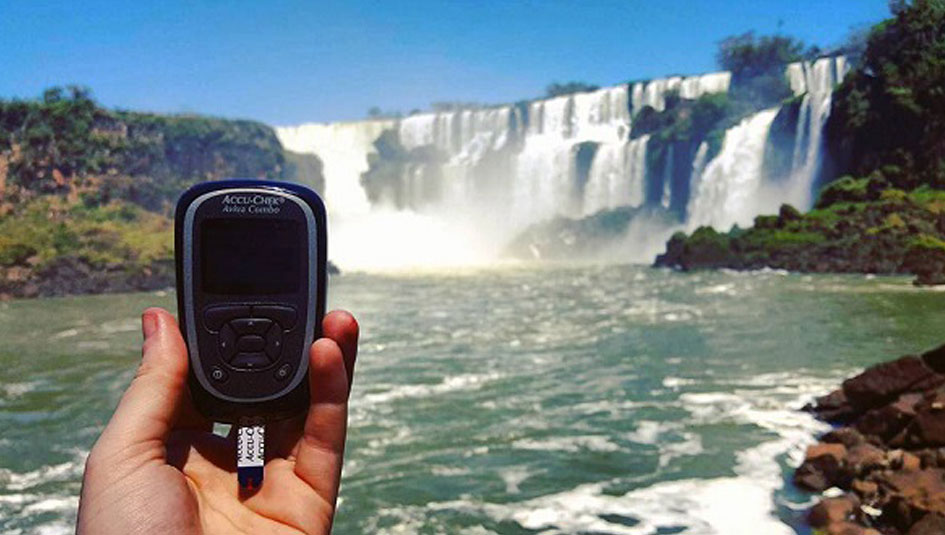Counting Carbs on the Go

Traveling with Type 1 diabetes? You’ll need to do more planning ahead, but there is no reason why you can’t have as much fun as someone without T1D.
One of the most important considerations is counting carbohydrates abroad. Most individuals with T1D count carbs to work out an insulin dose based on a ratio that has been determined by a healthcare professional. But how do you count the carbs of foods you’ve never eaten? What if no labels are provided or if you simply don’t understand what you are eating!?
Don’t fear. Here are some tips and tricks for counting carbs while traveling:
1. Practice makes perfect
Like most things with diabetes, practice is key. I’ve been counting carbohydrates for 7 years now, so I am at a stage where I no longer need to see the packaging to count. I feel like a walking encyclopedia of nutritional information. But getting to that stage took a lot of reading, learning, and practice. So, if you’re in the early stages, keep reading labels. Do this for both foods you are eating and foods you may eat in the future. Then keep practicing. Your counting won’t be perfect. It never is, since the slightest difference in portion size or physical activity contribute to blood sugar levels, too. Keep a record (either online or in a diabetes app) of successful carb counting.
Practice before you go. Research your destination and see what the local foods are. For example, in Asia, most foods are noodle or rice based. I don’t eat rice, but I was able to research some typical local dishes such as Phad Thai and make them at home to get a rough idea of the carbohydrate count.
You can recreate pretty much any dish from around the world at home. It’s a great excuse to cook or host a dinner party! This way, trying the dishes for the first time, you will have an estimate in mind of the carb count.
2. Use apps and books to your advantage
One great book I use is Carbs & Cals. This book gives a visual representation of different foods and their portion sizes, alongside a suggested carb count. This is perfect for people who want to try new foods but would like to compare what’s on their plate with an actual visual representation.
Nowadays, the book comes in an app form, which is more friendly for traveling with T1D, since your luggage will already be full with supplies. The book/app takes the initial guesswork out of counting carbs, and it is a great resource for beginners. There are others such as Myfitnesspal, which are free or inexpensive. These resources will make your travels a little easier.
3. Check online
When you are dining at big chain restaurants, you will often find nutritional information online. Simply download the PDF in advance, and you can get a rough idea of the carb count of your meal. Or, simply ask for the nutritional info. You’d be surprised at the number of people willing to help on this issue.
4. Play it safe
If you don’t want to go carb heavy on your travels, or you simply don’t eat a lot of carbs, then there is usually a low-carb alternative. When traveling in Asia, you will constantly have low-carb options in the form of street food markets. These are filled with people selling chicken, beef, and pork on sticks, along with sweetcorn, soups and more. When dining in restaurants, popular dishes include vegetable-based soups and stir-frys.
Basically, anything you want to eat on a menu in a local restaurant can come with stir-fried vegetables instead of rice or noodles, and they taste just as delicious!
5. Cook for yourself
If possible, prepare your own meals, which is also more budget-friendly. When I travelled throughout South America, we cooked for ourselves a lot. This meant that controlling my carb intake was a lot easier. I ate a lot of tuna pasta and sweetcorn, but I often replaced pasta with lettuce to keep my carb levels lower and manage my blood sugar better.
There are lots of tools and tricks to help you manage carb counting when travelling with T1D. Don’t ever feel like you can’t try new foods – you can! One of the best things about traveling is being able to sample new cuisines and flavors, and T1D won’t hold you back if you take the right steps to prepare.
If you’d like to follow my travels around the world, check out my T1D travel blog, Dream Big, Travel Far. You can also check out my new ebook, The Ultimate Guide to Traveling With Type 1 Diabetes, and a digital course, Traveling with Diabetes 101, at my online store.
Do you have an idea you would like to write about for Insulin Nation? Send your pitch to submissions@insulinnation.com.
Thanks for reading this Insulin Nation article. Want more Type 1 news? Subscribe here.
Have Type 2 diabetes or know someone who does? Try Type 2 Nation, our sister publication.







